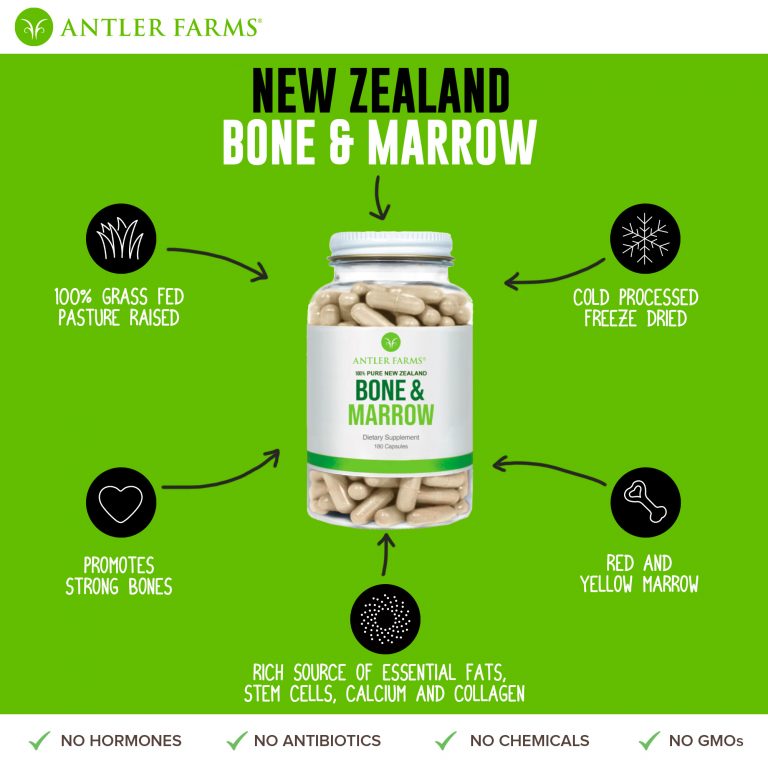What are the Benefits
of Bone & Marrow?
Bone marrow is largely comprised of healthy fats. Not too long ago, nutritionists erroneously professed that eating foods containing fat would lead to obesity and heart disease. But they were very wrong. With more research, scientists now understand the importance of consuming certain types of fat in a healthy diet.
The monounsaturated fat in bone marrow is an essential nutrient. The human body cannot produce it; it must be consumed. Fat is required for many bodily functions. It is a source of energy. It is needed to absorb some vitamins and minerals. It is necessary for cell function. And it is essential for producing hormones and controlling inflammation.
The most prominent benefit of consuming bone marrow is that it can improve overall heart health. Bone marrow’s fatty acids may improve cardiovascular health by lowering harmful LDL cholesterol while raising beneficial HDL cholesterol levels. This enhance thes function of blood vessels throughout the body. Bone marrow is also a natural source of collagen, which is beneficial for connective tissues, bones, skin, hair and nails. Bone marrow has conjugated linoleic acid (CLA), a super-nutrient with fat burning and anti-cancer properties, and many vitamins and minerals including calcium, iron, zinc, selenium, magnesium, manganese, and phosphorus.
Bone matrix supports optimal bone mineral composition and overall bone health. Bone matrix is the most natural and bioavailable medium to deliver nutrients that support the development and maintenance of healthy bones. MCHA is a highly absorbable type of calcium and phosphorus, both of which are the major mineral components of bone. MCHA also offers a variety of bone supporting minerals include magnesium, a calcium-binding protein called osteocalcin, collagen, and bone growth factors like bone morphogenetic proteins (BMPs), transforming growth factor beta (TGF-β), and insulin-like growth factors I and II (IGF-I and IGF-II). The body uses these components to maintain and repair our living bones and connective tissues.



WHAT ARE "GOOD" AND "BAD" FATS?
All fats have a similar chemical structure: a chain of carbon atoms bonded to hydrogen atoms. What makes one fat different from another are seemingly slight differences in structure which translate into crucial differences in form and function.
Saturated fats have single bonds between their molecules. New research suggests that saturated fats are not as bad as once believed. Though the consumption of saturated fats can increase both HDL and LDL, “good” and “bad” cholesterol, recent studies found that there is no link between saturated fat consumption and heart disease. Common sources of saturated fat include meat, dairy and baked goods.
Unsaturated fats contain one or more double or triple bonds between their molecules. Within unsaturated fat, there are two broad categories – monounsaturated (MUFA) and polyunsaturated (PUFA). Monounsaturated and polyunsaturated fats are the healthy fats that can actually improve cholesterol levels, decreasing your risk for cardiovascular disease. Common sources of unsaturated fat are fish, avocado, nuts, seeds and olive oil. Bone marrow is comprised of unsaturated fat.
Trans fats are a byproduct of industrial fat production. They result from a process called hydrogenation that is used to turn vegetable oils into solids. Trans fats are extremely unhealthy. Consumption of trans fats increases the amount of harmful LDL cholesterol in the bloodstream and reduces the amount of beneficial HDL cholesterol. Trans fats were officially banned in 2015 in the USA and are in the process of being phased out. Common sources of trans fat are fried foods and baked goods.
